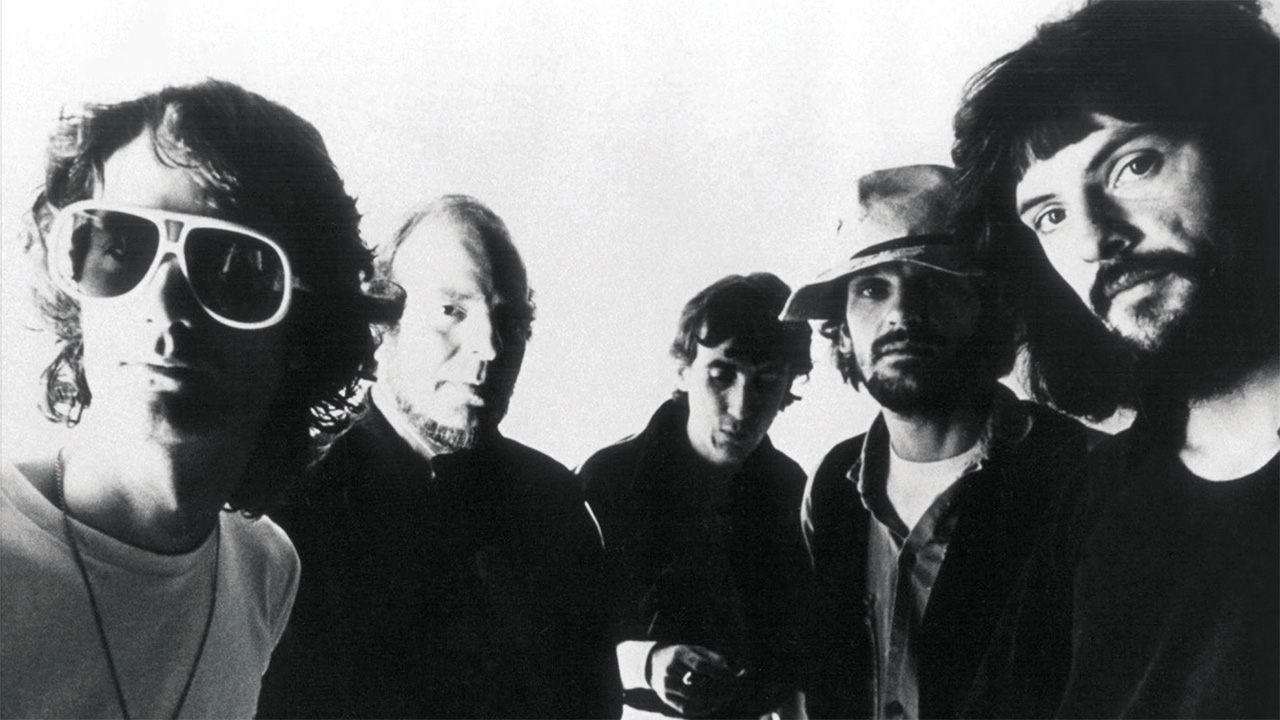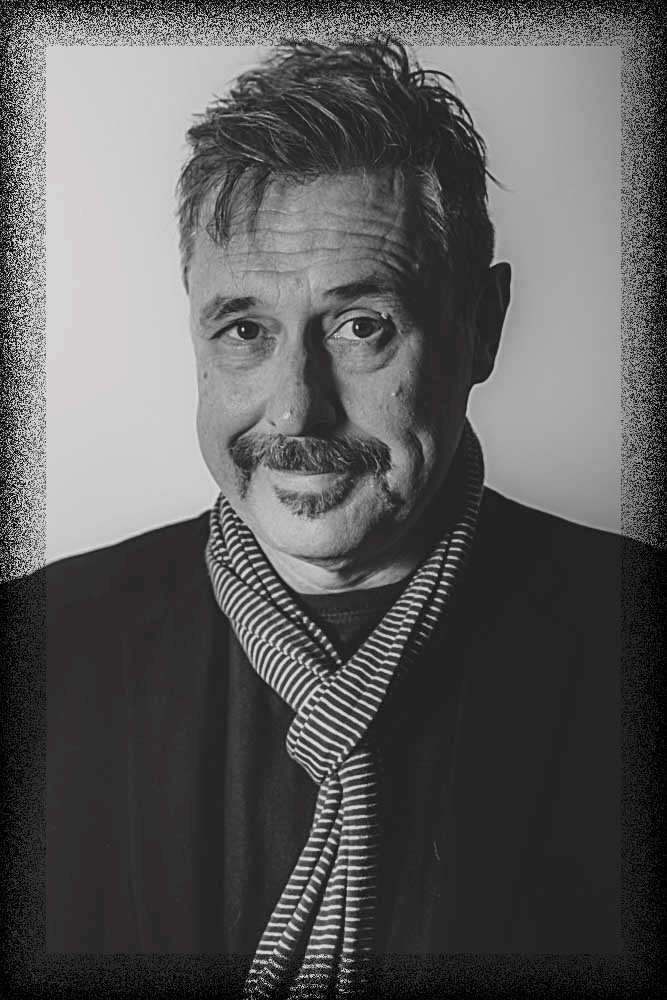Van der Graaf Generator responded to the challenges of the late 70s by changing their approach to music and shortening the band name. In an 18-month period Van der Graaf delivered trimmed-down album The Quiet Zone/The Pleasure Dome – their last studio album of the 20th century – and follow-up live release Vital. In 2015 frontman Peter Hammill told Prog how it all came about.
At the end of 1976, after three albums over the remarkable two years since their reunion, Van der Graaf Generator were making some of the best music of their career. However, they were increasingly tired – and almost definitely broke. Keyboard player Hugh Banton, whose organ playing had been so central to their output, had recently married and felt the calling to get a ‘proper job.’ and left the band after fulfilling his commitments; but there were still dates booked and albums owing.
Remaining members Peter Hammill, Guy Evans and David Jackson had to move fast. “In the words of Mark E Smith,” Hammill laughs, “we’re a working band, so what do we do? We tour, we make records.” Hammill being Hammill, the easy route was not an option. “Van der Graaf came about because Hugh had left,” he states.
He asked violinist Graham Smith from Charisma labelmates String Driven Thing to join, after he’d played on Hammill’s yet-to-be- released solo album, Over. “We knew Graham, and we didn’t want any keyboard player to come in as a replacement, the singer says. “We felt that the best route would be to have Graham involved.”
He also called on old friend and ex-colleague Nic Potter to play bass, which Banton had been cover on pedals for the previous four albums – ever since, in fact, Potter had left in 1970. He, too, had played on Over. “It was going to be just Graham coming in – we’d have violins with horns, rather than keyboard with horns. I think we rehearsed a day or so, at which point David decided to leave.”
Jackson, whose sax had been as integral to VaGG as Banton’s organ, was also faced with the dilemma of raising a young family on next to nothing. “It was the usual madness of VdGG at all stages,” Hammill says. “By that time the tours were booked, there were only so many days to go, and we were suddenly a four-piece.”
It led to a fundamental shift in the group’s sound. “Violin is a great soloing instrument but not as structural as keyboards or horns,” he says. “I had to step up and play more guitar, and Nic had to be more forceful on bass. Simply by the cards we’d been dealt, we ended up being the group we were, which was very, very aggressive and very good fun – but quite a surprise to us as well.”
He continues: “We said we were continuing and we’d still do the dates. These days everything takes months to sort out; then it was literally a matter of days. We toured a bit and recorded almost straight away, which was great. It all fed into the writing of The Quiet Zone/The Pleasure Dome. A lot of it was written once we’d established what sort of group we were. Some of the writing was expressing the headlong rush that we were involved in. In a way it was an autobiographical record. Not of me personally, but the group as it was in those days.”
With the line-up shift and newfound unfussiness, the band sheared the ‘Generator’ from their name, becoming simply Van der Graaf. A tranche of European dates – some supporting Hawkwind – honed the group’s sound.
“Any trimmings had gone,” Hammill says. “A lot of the tunes we were playing from The Quiet Zone/The Pleasure Dome are generally not that complicated, but they’re pretty forceful, with plenty of distortion; embellished three-chord tricks, if you like.”
Mo and Guy are one of the great unsung rhythm sections – capable of great sensitivity, but also great overload
The sound chimed perfectly with the mood of the year, with punk seemingly sweeping away the old guard. Van der Graaf received the ‘ultimate accolade’ – being praised by the Pink Floyd-hating Johnny Rotten at the very apex of the punk wars.
Recorded between May and June, The Quiet Zone/The Pleasure Dome was released in early September 1977. It remains one of the most aggressive and accessible records Hammill has ever put his name to. With its memorable picture of the band on the reverse (which they had shot for the cover) and the Jess Artem painting of a trapeze artist high above the world on the front, plus John Pasche’s new group logo, the album felt relevant and contemporary; NME and Sounds both reviewed it warmly.
Hammill gives much of the credit to bassist Potter, who he always called ‘Mozart.’ “A lot of it was hung on the bass. Mo invented a whole different way of playing in terms of flanging and overload. He and Guy are one of the great unsung rhythm sections – capable of great sensitivity, but also great overload if required.”
Ahead of a UK throughout October and November, they convened at Headley Grange – where Led Zeppelin and Genesis had recorded – to rehearse. Former cello teacher Charles Dickie joined to make the group a quintet, responding to the marvellously worded Melody Maker ad: “Cellist/keyboard player required for a bizarre and demanding post in a named organisation.”
The core of Vital is the fury of the Quiet Zone band, as well as David Jackson returning
The set list featured a selection of recent material, Hammill solo work and two songs never played live by VdGG: Pioneers Over C and a generous helping (though not all) of A Plague Of Lighthouse Keepers. It was decided to capture their live intensity on their first-ever live album, for which the Marquee in London was booked for two dates in January 1978. The result, Vital, is one of the most direct double-lives of the period.
“We were held together by Sellotape and sealing wax,” Hammill says. “As ever, we were on the verge of going bust. We knew our days were numbered in terms of getting advances for making albums. The core of Vital is the fury of the Quiet Zone band, as well as David Jackson returning as our special guest. The recording was pretty wild. Guy Evans mixed it – he took all the tapes away to find out what on earth we had managed to record. He did a great job.”
It would soon come to an end. The group played the Marquee again in June 1978 – a show which was attended by John Lydon as well as Hugh Banton. “We didn’t know it was over; nobody knew,” Hammill says. “We still did a few shows after Vital – we were playing for our lives.”
After a on the bill at the Kohfidisch Festival on June 17, 1978 (which was filmed), Van der Graaf split the following month – just as Charisma pronounced Vital to be the band’s biggest-selling album to date (its special price and Lydon’s patronage certainly helped to boost sales). A statement read: “Our decision is unanimous, unreserved and brotherly. There are no differences or antagonisms between us. But the band, the name, this phase of the story all end here.”
It didn’t end there for Van der Graaf Generator, who reunited in 2005. But it did end for VdG, whose spirit could most definitely be felt in Hammill’s 80s outfit, the K Group, featuring three of the former outfit’s members. With the death of Nic Potter in 2013, any hopes of the VdG version reuniting were thwarted. “I don’t think there are many bass players like Mo,” Hammill says. “It would be a very different thing. Never say never; but I was a younger man with more resources in those days.”
The two albums that bear Van der Graaf’s name offer a glimpse into something very different from the earlier band, and they also generated an all-time Hammill classic in The Sphinx In The Face. “I still play it occasionally; it’s very good fun. It’s a little bit too guitar-based to play now in VdGG, as currently constituted, as we are in slightly different territory.”
He looks back at the period with great affection. “Maybe today’s trio takes more mental energy,” he says, “but the VdG stuff was very physically demanding to perform.”





